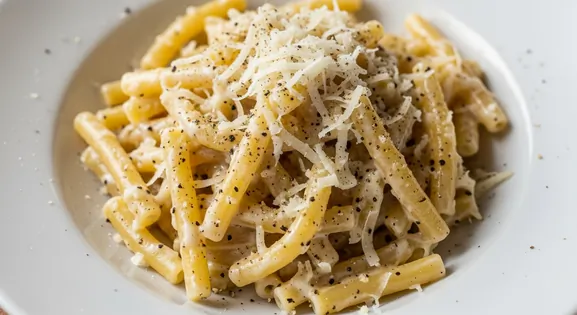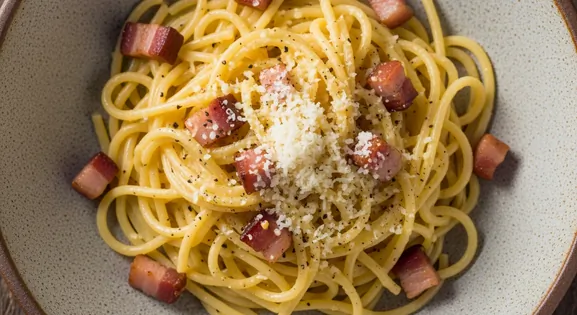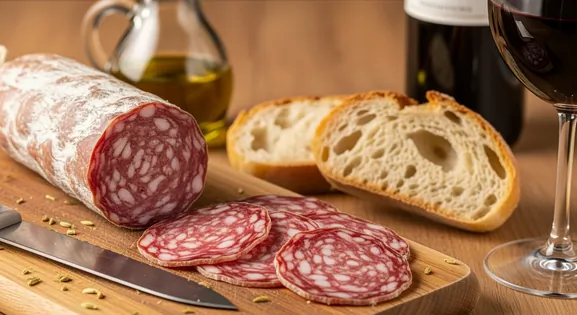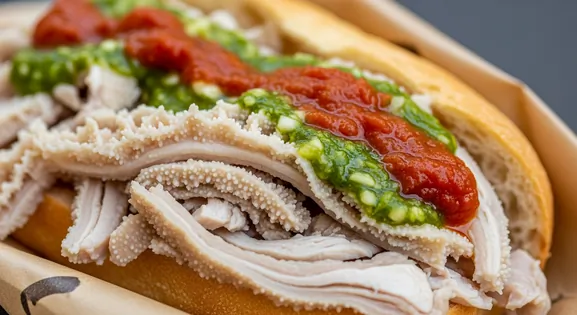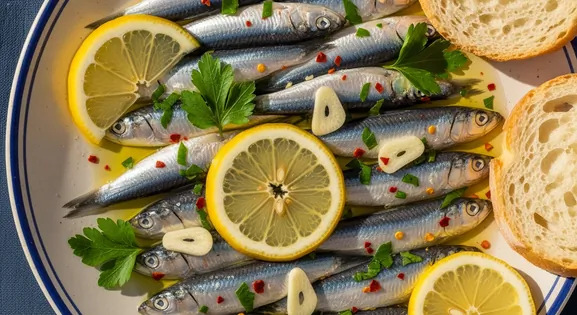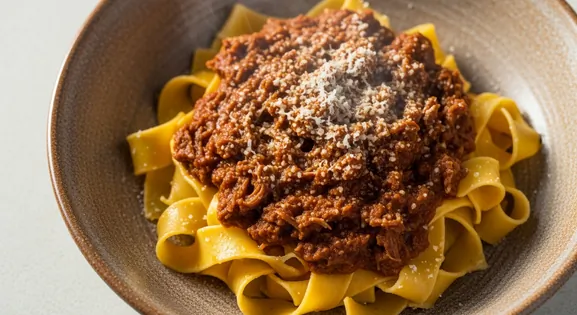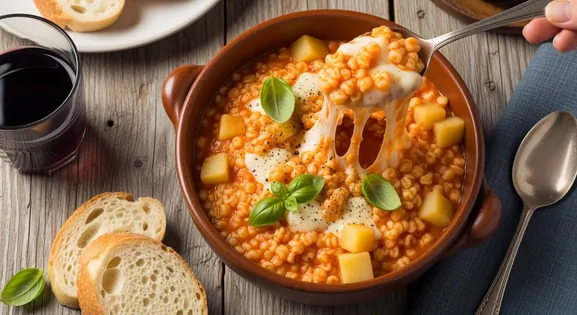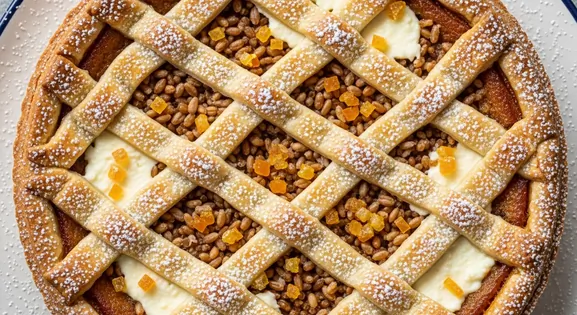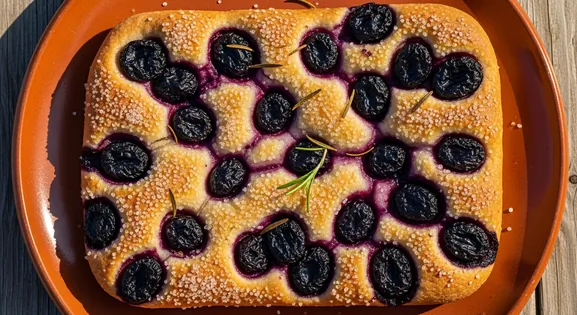Pinsa Romana in Italy: A Complete Food Lover's Guide
Pinsa Romana

What is Pinsa Romana (Roman Pinsa)?
Pinsa Romana is a distinctive oval-shaped flatbread originating from Rome, known for its light, airy, and highly digestible crust. Crafted from a blend of wheat, soy, and rice flours using a high-hydration dough and a long cold fermentation process, Pinsa offers a unique texture – crispy outside, soft and cloud-like inside. Topped with classic Roman ingredients, it's a popular modern alternative to traditional pizza.
A Traveler's Guide to Authenticity
What to Look For
-
Cooked fresh to order
Ensures the pinsa is hot, toppings are cooked correctly, and food hasn't been sitting out.
-
Served piping hot
High temperature cooking kills pathogens. The pinsa should arrive hot from the oven.
-
Reputable pinseria or restaurant
Established places with good reviews are more likely to maintain high hygiene standards and use quality ingredients.
-
Fresh-looking toppings
Ingredients like vegetables, cheese, and meats should appear fresh and appetizing.
-
Clean environment
Observe the cleanliness of the eating area, serving staff, and visible preparation areas.
What to avoid
-
Pre-topped or pre-cooked pinsas sitting out (uncommon for whole pinsas, might apply to some 'al taglio')
Food held at room temperature carries higher risks. Always prefer freshly baked.
-
Lukewarm pinsa
Indicates insufficient cooking or reheating, posing a safety risk.
-
Toppings that look old, wilted, or discolored
Suggests lack of freshness in ingredients.
-
Visibly unclean preparation areas or utensils
Increases the risk of cross-contamination.
How to Order Pinsa Romana (Roman Pinsa)
Perfect Partners: What to Pair
Light-bodied White Wine
Wine
A crisp, dry white wine like a Frascati Superiore or a Vermentino complements the lightness of Pinsa without overpowering its delicate flavors. Its acidity cuts through any richness from toppings.
Craft Beer (Lager or Pilsner)
Beer
A refreshing Italian craft lager or pilsner provides a clean, crisp counterpoint to the Pinsa. Its effervescence and subtle bitterness can enhance the flavors of both simple and more complex toppings.
Explore Pinsa Romana (Roman Pinsa) in Detail: City Guides
Discover where to find the best Pinsa Romana (Roman Pinsa) and learn local tips in these cities:
Tracing the Roots of Pinsa Romana (Roman Pinsa)
While often marketed with nostalgic references to ancient Roman flatbreads, the modern Pinsa Romana is a relatively recent culinary innovation. Its specific formulation, utilizing a patented blend of flours (wheat, soy, rice) and techniques like high hydration and long cold fermentation, was developed around 2001 by the Di Marco company in Rome. The goal was to create a flatbread that was lighter, easier to digest, and recalled rustic, traditional bread-making methods. It quickly gained immense popularity in Rome and has since spread across Italy and internationally.
Traditional Preparation Techniques
The process starts with a specific flour mix (wheat, soy, rice). This blend is combined with cold water (typically 80% hydration or more), yeast (often very little), salt, and sometimes olive oil. The dough undergoes a long fermentation period at controlled cold temperatures, often 48 to 72 hours or even longer. This develops flavor and aids digestibility. The mature dough is carefully hand-stretched ('stesura a mano') into its characteristic oval shape, preserving the air bubbles developed during fermentation. It's then topped with ingredients and baked quickly in a very hot oven, resulting in its signature airy, bubbly crust and crispy base.
Key Ingredients of Pinsa Romana (Roman Pinsa)
Flour Blend
A specific mix of wheat, soy, and rice flours is crucial for Pinsa's unique texture and digestibility. This blend contributes to the dough's high hydration capacity and the characteristic 'alveolatura' (airy pockets) in the crust.
Quality indicator: Look for a light, airy crust with visible large air pockets, indicating proper flour blend and fermentation.
High Hydration Dough
Pinsa dough typically has a water content of 80% or more, making it very wet and sticky. This high hydration is key to its light, cloud-like interior and crispy exterior when baked at high temperatures.
Quality indicator: The pinsa should feel incredibly light for its size, almost like a cloud, and not dense or heavy.
Long Cold Fermentation
The dough undergoes a prolonged fermentation, often 48 to 72 hours or more, at controlled cold temperatures. This process develops complex flavors, breaks down starches, and contributes significantly to the dough's digestibility and airy structure.
Quality indicator: A well-fermented pinsa will have a slightly tangy, complex flavor and a very light, digestible feel after eating.
Local Pinsa Romana (Roman Pinsa) Variations in Italy
Topping Combinations
Virtually endless variations exist, mirroring Roman pizza toppings (Margherita, Diavola, Capricciosa, Ortolana, Prosciutto e Funghi, Amatriciana-style, Carbonara-style, etc.).
Pinsa Bianca
Base brushed with olive oil, salt, and sometimes rosemary, without tomato sauce. Often topped after baking.
Pinsa Rossa
Base with tomato sauce, forming the foundation for many classic toppings.
Pinsa 'al Taglio'
Pinsa baked in larger oval shapes and sold by the rectangular slice, often priced by weight or slice.
Dietary Information
Dietary Information
Important Note for Travelers: Your safety is our priority. Below are the common allergens associated with the traditional preparation of this dish. However, recipes and ingredients can vary significantly between establishments. Always confirm all ingredients directly with the food vendor before ordering, especially if you have a severe allergy.
Potential Allergens
Dietary Suitability
Frequently Asked Questions about Pinsa Romana (Roman Pinsa)
What is Pinsa Romana?
Pinsa Romana is a type of Roman flatbread characterized by its oval shape and a light, airy, bubbly crust. It's made from a specific blend of flours (typically wheat, soy, and rice), has a high water content (high hydration), and undergoes a long, cold fermentation process. This results in a texture that's crispy on the outside and soft inside, often claimed to be more easily digestible than traditional pizza.
How is Pinsa different from Pizza?
Key differences lie in dough composition and preparation. Pinsa uses a blend of wheat, soy, and rice flours, has higher hydration, and undergoes a longer, colder fermentation (48-72+ hours) compared to many pizza doughs. This results in its lighter, airier texture and claimed digestibility. Pinsa is also characteristically oval, unlike round Neapolitan pizza.
How to ensure quality when eating Pinsa Romana?
Pinsa Romana prepared in reputable establishments is generally a high-quality product. It's a baked item cooked at high temperatures. To ensure a good experience, choose well-regarded pinserias with transparent hygiene practices and ensure toppings appear fresh.
What are typical Pinsa Romana toppings?
Toppings often mirror those on Roman pizza, reflecting local ingredients. Popular choices include classic Margherita, 'rossa' (tomato sauce based) or 'bianca' (olive oil base), prosciutto and mushrooms, sausage and greens, and options inspired by Roman pasta dishes like Amatriciana or Carbonara.
Is Pinsa Romana healthier than Pizza?
Pinsa is marketed as more digestible due to its specific flour blend, high hydration, and long fermentation, which may break down complex carbohydrates. However, overall healthiness depends on chosen toppings (vegetables vs. fatty meats/cheeses) and portion size. The base calorie-wise might be comparable or slightly lighter than some pizza bases.
Is Pinsa Romana vegetarian or vegan?
Many vegetarian topping options are available (e.g., Margherita, Ortolana). For vegan options, order a pinsa 'rossa' (tomato sauce base) or 'bianca' (oil base) without cheese and with only vegetable toppings. The dough itself is typically vegan (flour, water, yeast, salt, sometimes oil), with eggs or dairy being very rare.
Is Pinsa Romana gluten-free?
No, traditional Pinsa Romana contains wheat flour as a primary ingredient and is therefore not suitable for those with celiac disease or gluten sensitivity. While rice and soy flour are part of the blend, wheat flour is essential for its characteristic structure and texture. Always confirm with the establishment if you have dietary restrictions.
Expert How-To Guides about Pinsa Romana (Roman Pinsa)
How to Spot Authentic Pinsa Romana
Learn to identify the key characteristics that define a genuine and high-quality Pinsa Romana, ensuring an authentic culinary experience.
- Look for the oval shape: This elongated, rounded shape is the most distinctive visual cue.
- Examine the crust: It should be noticeably bubbly, airy ('alveolato'), and light, not dense or flat.
- Assess the texture: Expect a crispy exterior crust and a soft, slightly chewy interior crumb.
- Note the base thickness: Often slightly thicker than a Roman-style thin-crust pizza ('pizza tonda'), but lighter in feel.
- Check the menu description: Look for 'Pinsa Romana' explicitly named, often mentioning the flour blend or long fermentation.
Choosing Your Pinsa Toppings
Navigate the delicious and diverse topping options available for Pinsa Romana, making informed choices like a local.
- Start with classics: Try a Margherita to appreciate the dough, or a simple 'rossa' or 'bianca' base.
- Explore Roman flavors: Opt for toppings inspired by Roman pasta dishes like Amatriciana, Carbonara, or Cacio e Pepe.
- Consider fresh ingredients: Pinsas topped after baking with ingredients like prosciutto crudo, arugula, and burrata are popular and delicious.
- Balance richness: Pair rich ingredients (sausage, fatty cheese) with lighter elements (vegetables, arugula).
- Ask for recommendations: Don't hesitate to ask the staff ('Quale consiglia?') for their popular or traditional suggestions.
How to Eat Pinsa Romana
Discover the customary ways to enjoy this unique Roman flatbread, whether dining in a pinseria or grabbing a slice on the go.
- Use fork and knife (usually): In sit-down pinserias or restaurants, Pinsa is typically eaten with a fork and knife, cutting manageable pieces.
- Folding (for 'al taglio'): If bought by the slice ('al taglio'), it's common to fold the slice lengthwise ('a portafoglio') for easier handling while eating on the go.
- Savor the crust: Appreciate the contrast between the crispy bottom/edges and the airy interior – it's the hallmark of Pinsa.
- Enjoy it hot: Pinsa is best served freshly baked and hot.
Our Commitment to Quality
At Tasteplorers, our mission is to provide the most accurate and useful travel information in the world. To achieve this, all content on this site is created through our unique editorial framework. We utilize leading AI research tools, guided by our proprietary prompts, and a multi-stage validation process. This entire system is overseen by our editorial team to ensure everything we publish meets our high standards for accuracy, cultural nuance, and practical value for travelers.
Learn more about our Editorial Process and our Mission.
Countries
Explore regions
Europe
Discover Europe's diverse culinary landscape, from Mediterranean flavors to hearty Alpine fare. Learn to navigate markets, decode menus, and eat like a local.
Latin America & Caribbean
Discover the vibrant cuisines of Latin America & the Caribbean. Our expert guide covers everything from Mexican street food to Peruvian ceviche and market tips.
Oceania
Explore Oceania's diverse food scene. Learn about Polynesian earth ovens, Fijian feasts, and the vibrant café culture of Australia and New Zealand.
Southeast Asia
Explore Southeast Asia's diverse food cultures from Thailand to Vietnam. Get expert tips on navigating spice levels, choosing quality vendors, and understanding the rich traditions of the region.
